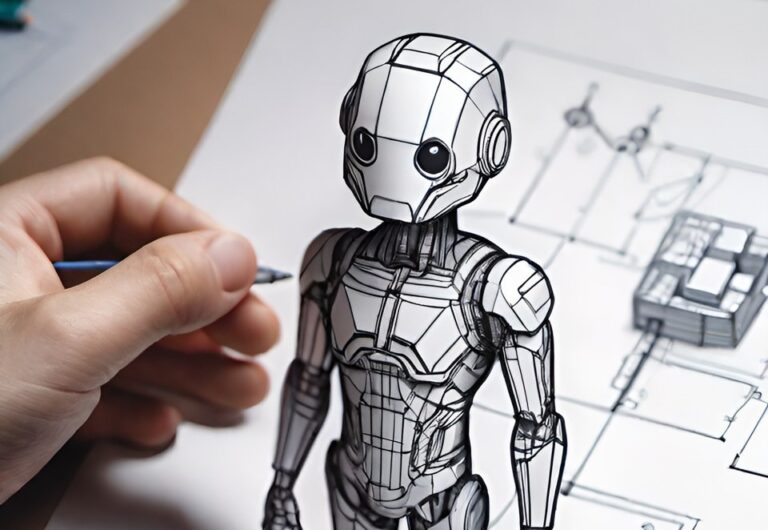Draw it out on paper, take a picture, and Edit the picture.
In today’s professional world, diagrams are a common tool used to convey complex information in a simplified manner. Whether you’re presenting a concept, explaining a process, or designing a layout, a well-constructed diagram can make a significant impact. But what if you don’t have access to specialized software to create visually appealing diagrams? Fear not! In this article, we’ll explore a simple and effective method to create professional-looking diagrams using just a piece of paper, a camera, and a few editing tools.
The Process
Creating a diagram without diagram software may sound daunting, but with a step-by-step approach, it can be achieved effortlessly. Here’s how:
1. Start with a clear objective
Begin by defining the purpose of your diagram. Is it to explain a workflow, demonstrate a concept, or illustrate relationships? Having a clear objective in mind will help you structure your diagram effectively.
2. Grab a piece of paper
Once you have clarity on your objective, grab a piece of paper. Don’t be concerned about your drawing skills; the purpose here is to create a rough representation of your ideas.
3. Start drawing
Use your artistic skills (or lack thereof!) to create the basic elements of your diagram. You can draw shapes, lines, arrows, or any other components that are relevant to your objective. Don’t worry about perfection; this is just a rough sketch.
4. Capture the photo
Once you’re satisfied with your hand-drawn diagram, take a clear photo of it using a camera or a smartphone. Ensure good lighting and minimize any shadows or reflections for optimum clarity.
5. Edit the picture
Transfer the photo to your computer and open it in an image editing software or even a simple paint tool. You can use free applications like Paint (on Windows) or Preview (on Mac) for basic editing functionalities.
6. Markup tools
Look for the markup tools in your editing software. Commonly found as annotation or drawing tools, they allow you to add lines, shapes, text boxes, and other graphical elements over your original photo. Make sure to choose opaque shapes that conceal the picture underneath completely.
7. Add labels and titles
Use text boxes to label the different parts of your diagram. Clearly articulate the purpose of each element and provide any necessary information or explanations.
8. Fine-tune and refine
Take your time to tweak and refine your diagram. Adjust line thickness, color, and fonts as needed to enhance its visual appeal and clarity.
9. Save and export
Once you are satisfied with the final result, save your diagram as an image file. Popular formats like JPEG or PNG work well and can be easily shared or inserted into presentations or documents.
FAQ – Frequently Asked Questions
1. Can I use any type of paper for creating my diagram?
Absolutely! Any type of paper that suits your needs and is easy to work with will suffice. A plain white sheet or a graph paper can both be excellent choices.
2. Do I need to be an artist to create a good-looking diagram?
Not at all! The purpose of this method is not to create masterpieces but to effectively convey information. Focus on clarity and simplicity rather than artistic perfection.
3. Which image editing software can I use for editing my diagram?
You can use any image editing software that offers basic drawing or annotation tools. If you don’t have access to specialized software, free applications like Paint or Preview are a good option.
4. Can I edit my diagram after marking it up?
Absolutely! Digital editing tools allow you to make modifications to your diagram if needed. You can easily add or remove elements, change colors, or adjust sizes to improve the overall visual impact.
5. Is this method suitable for all types of diagrams?
While this method is versatile, it may not be ideal for extremely complex diagrams requiring intricate details. However, for most common use cases, this approach can achieve professional results.
Creating professional-looking diagrams without specialized software is now within your reach. By following this simple process of drawing on paper, capturing a photo, and using markup tools for editing, you can convey complex information in an organized and visually appealing manner. So, grab that piece of paper, let your creativity flow, and impress your audience with your DIY diagramming skills.
